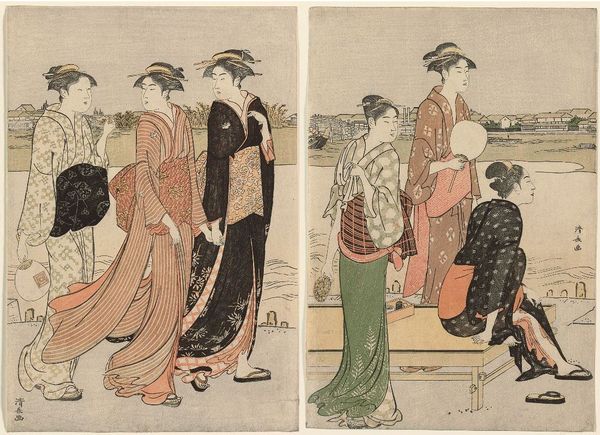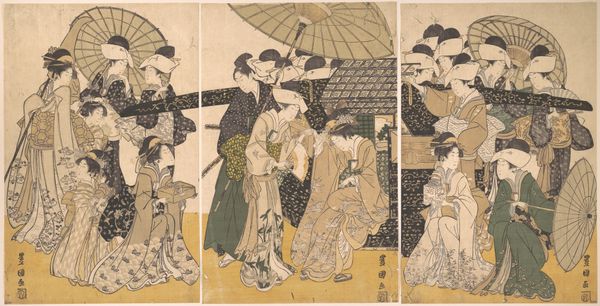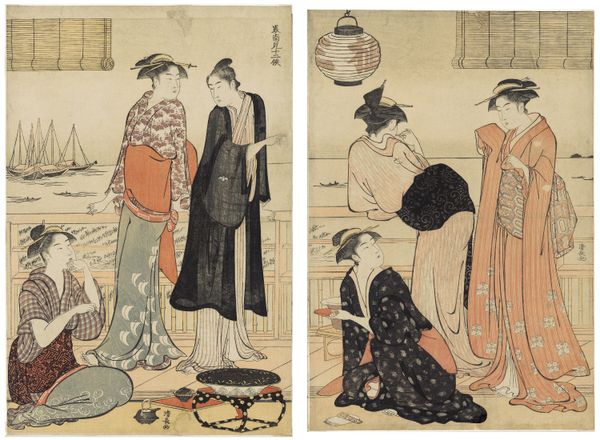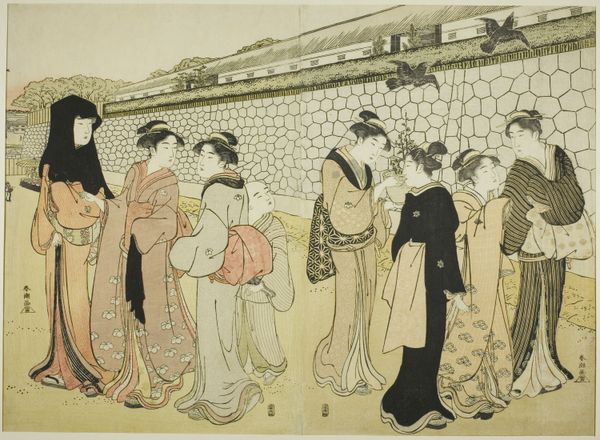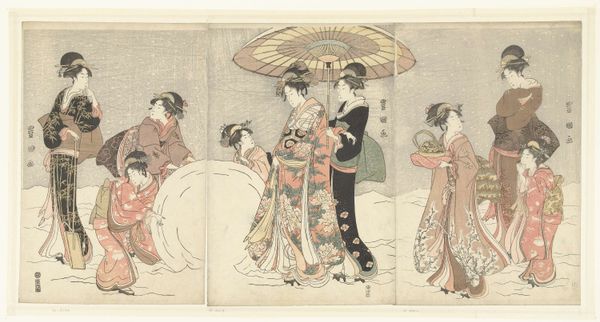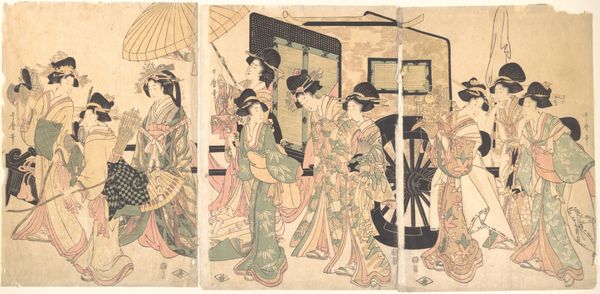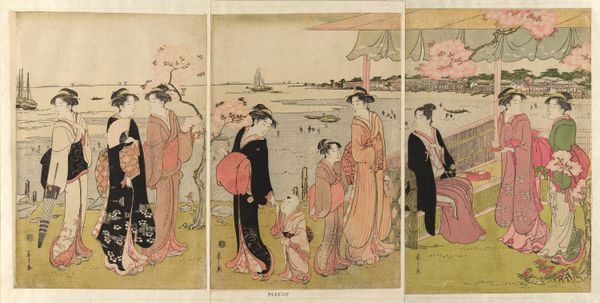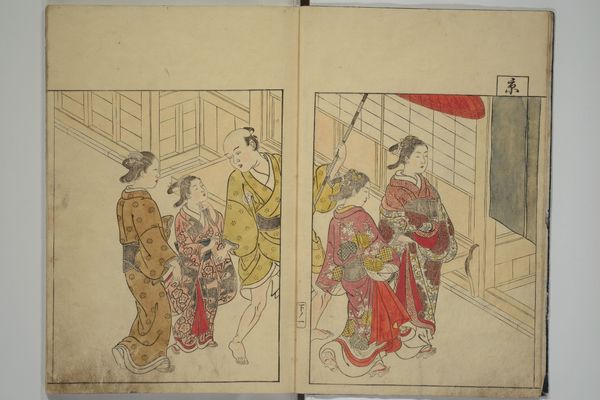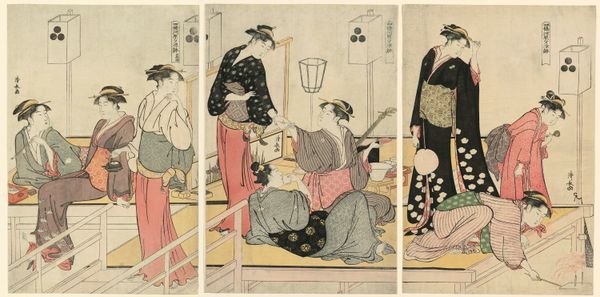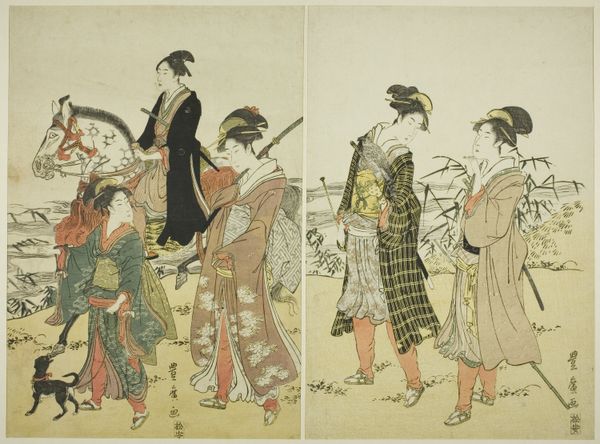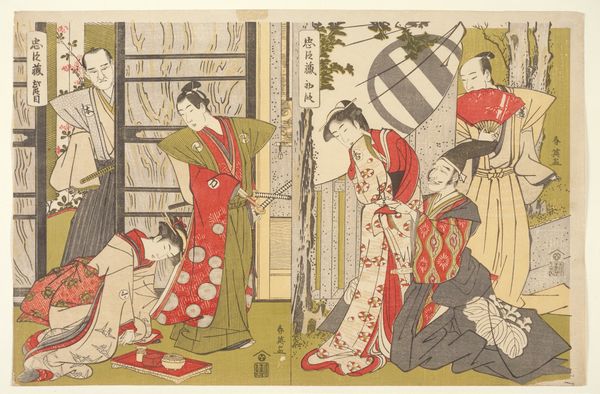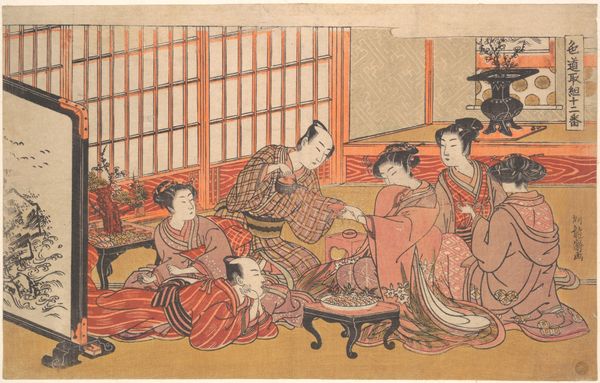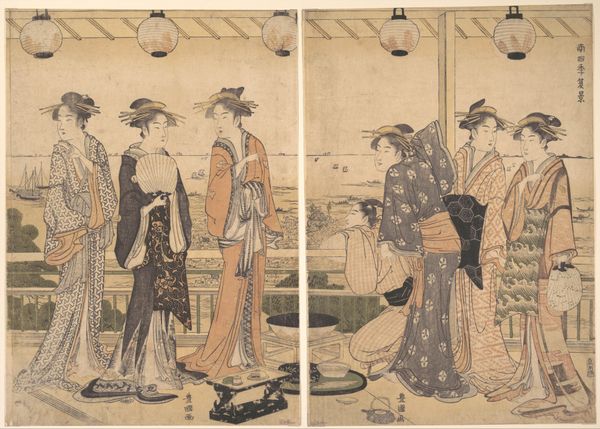
Enjoying the Evening Cool on the Banks of the Sumida River 1774 - 1794
0:00
0:00
print, woodblock-print
#
portrait
# print
#
asian-art
#
ukiyo-e
#
woodblock-print
#
cityscape
#
genre-painting
Dimensions: A: H. 15 in. (38.1 cm); W. 10 in. (25.4 cm) B: H. 14 5/8 in. (37.1 cm); W. 9 15/16 in. (25.2 cm)
Copyright: Public Domain
Editor: Here we have "Enjoying the Evening Cool on the Banks of the Sumida River," a woodblock print by Torii Kiyonaga, likely from the late 18th century. I’m struck by its serene atmosphere and how it captures everyday life. How do you interpret this work within its cultural context? Curator: The image is incredibly evocative, isn't it? Kiyonaga's work offers a glimpse into the floating world or *ukiyo* culture of Edo-period Japan. It’s vital to view these depictions of women not simply as aesthetic objects, but also as reflections of shifting societal norms and burgeoning female agency within certain urban spaces. What do you notice about how these women are presented? Editor: Well, they seem quite confident and stylish in their kimonos. They aren't performing any domestic duties; they're simply enjoying leisure time. Curator: Exactly! That's precisely where the feminist lens becomes relevant. The representation of women in ukiyo-e prints like these is fascinating because it both reinforces and subtly challenges conventional roles. These prints catered to a largely male audience, but they also participated in the construction of female identities and desires. Think about their elaborate attire; what might that signify within a rigid class structure? Editor: Perhaps a form of rebellion or self-expression within societal constraints? Their fashion choices allow them to navigate the city in a unique way. Curator: Precisely. And Kiyonaga, in particular, was known for depicting women of height and stature, presenting a less conventional ideal of beauty, that was radically different than previous generations, which reflects on shifting representations of the female body and ideal form. Consider how these images, disseminated widely, shaped perceptions of women both then and perhaps even now. What does the *ukiyo-e* legacy tells us? Editor: I guess I never thought about prints this way. I’m more aware of the historical context surrounding the artwork and how gender is visualized here. I have never considered fashion to be something so important, beyond surface aesthetics. Curator: It opens avenues to understanding power, agency, and social dynamics that we have to be sensitive to today. Hopefully you keep these lessons for later in your studies.
Comments
No comments
Be the first to comment and join the conversation on the ultimate creative platform.
